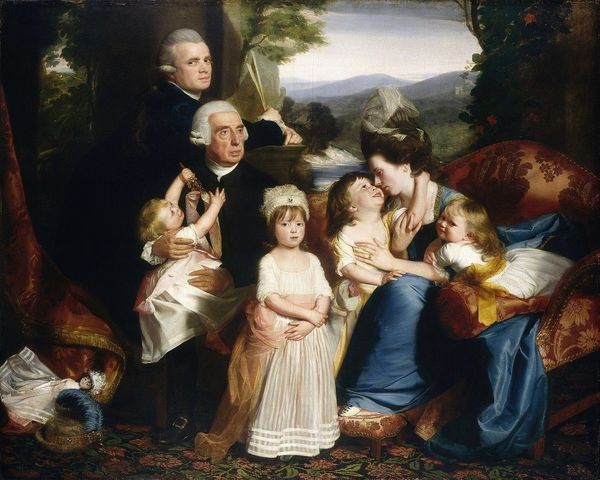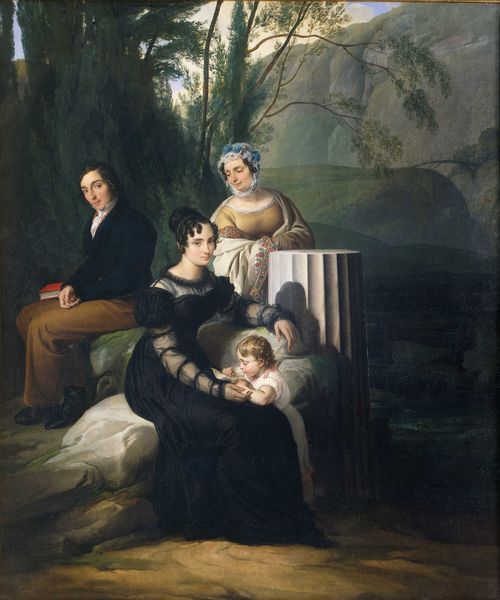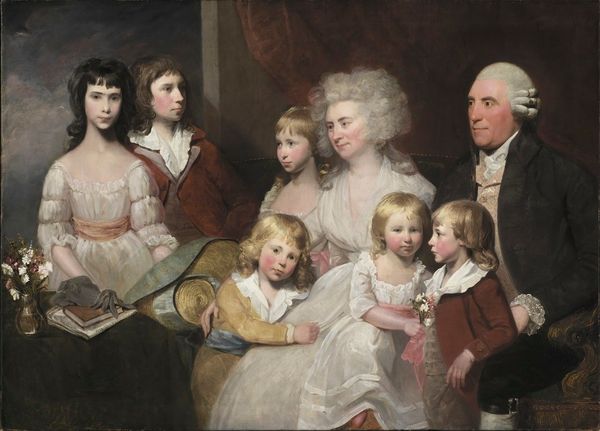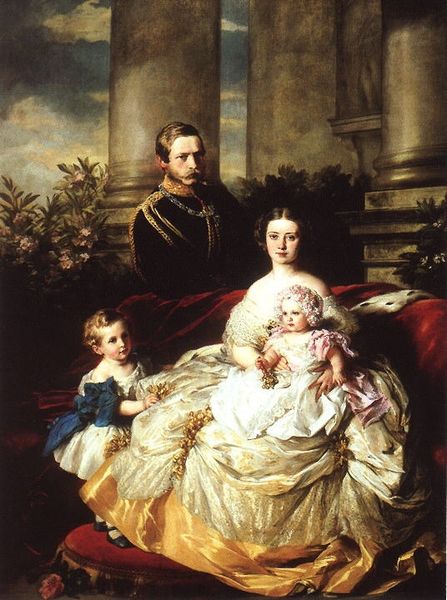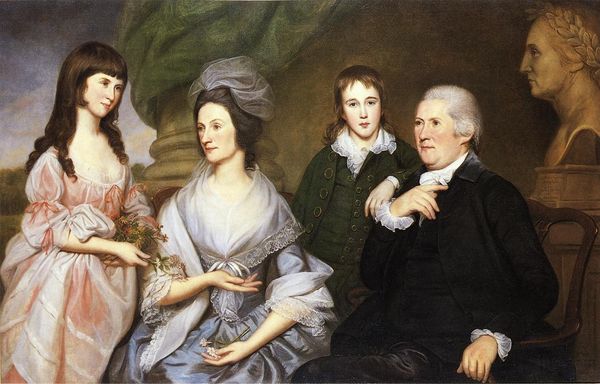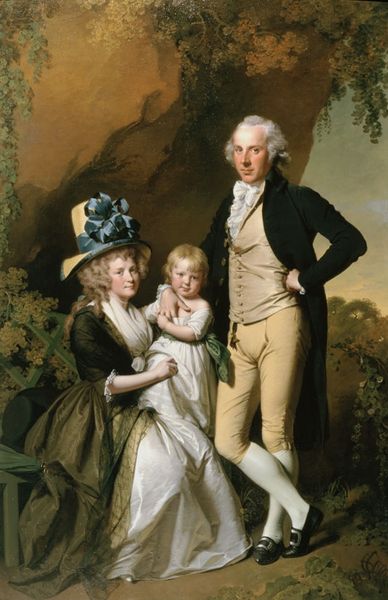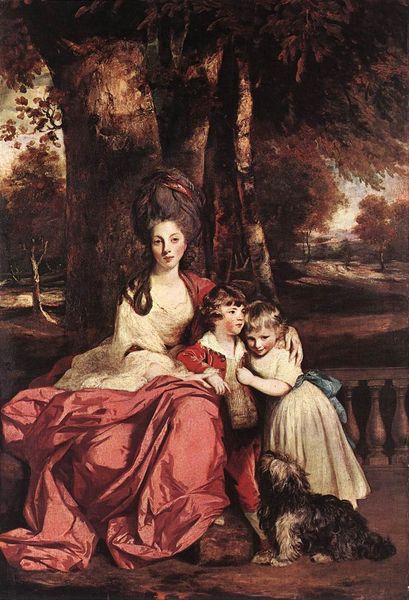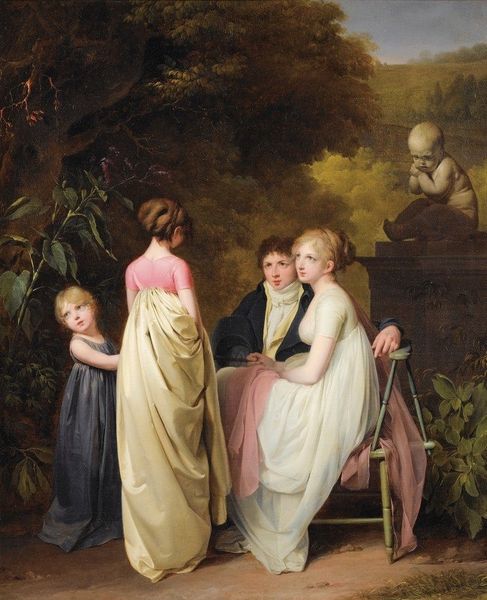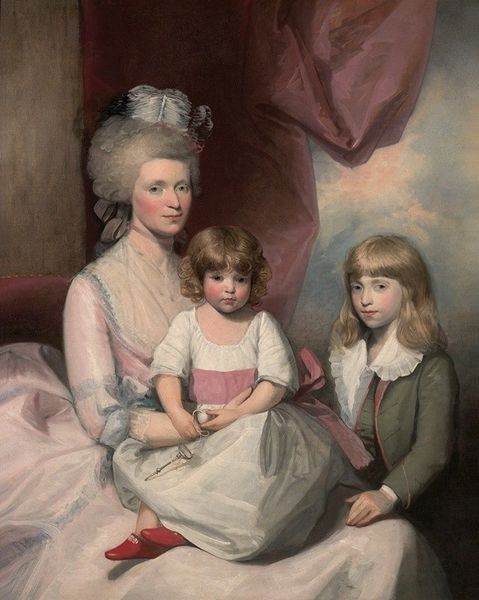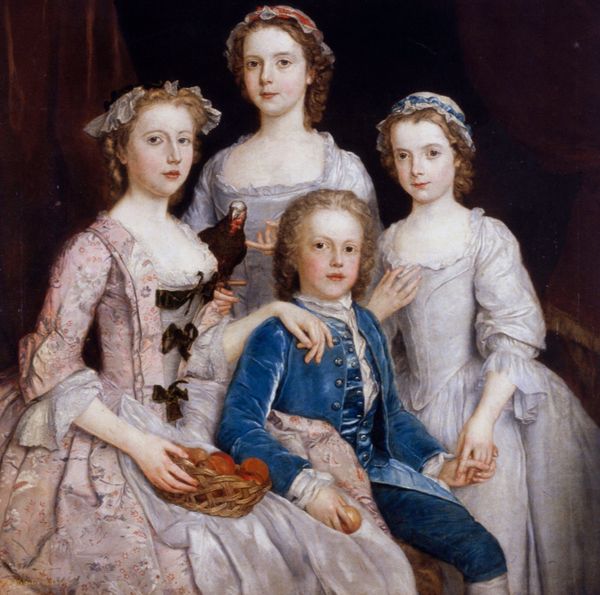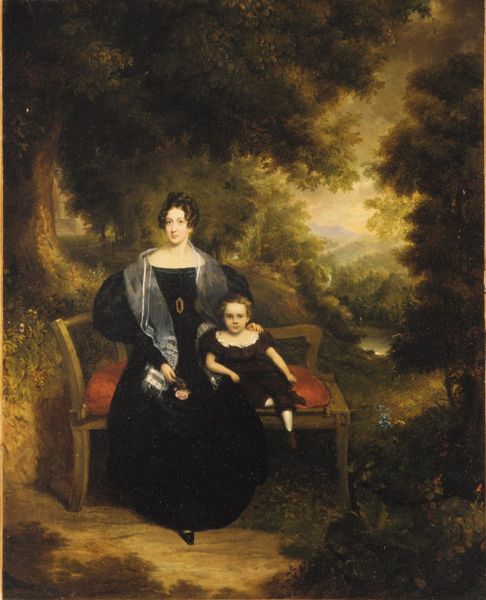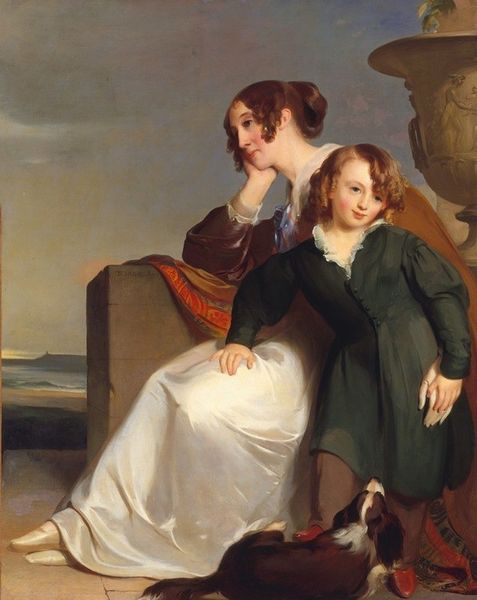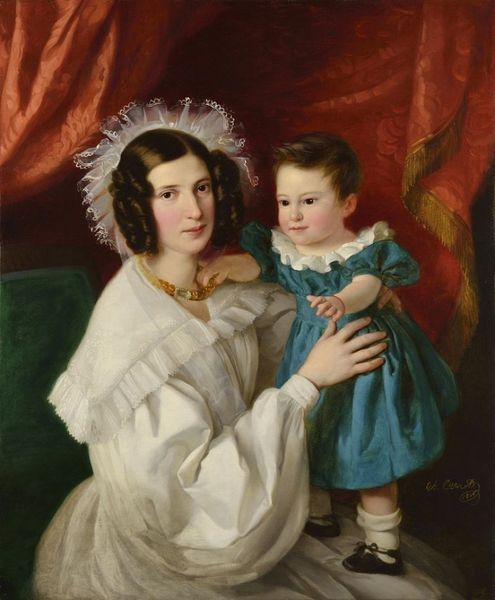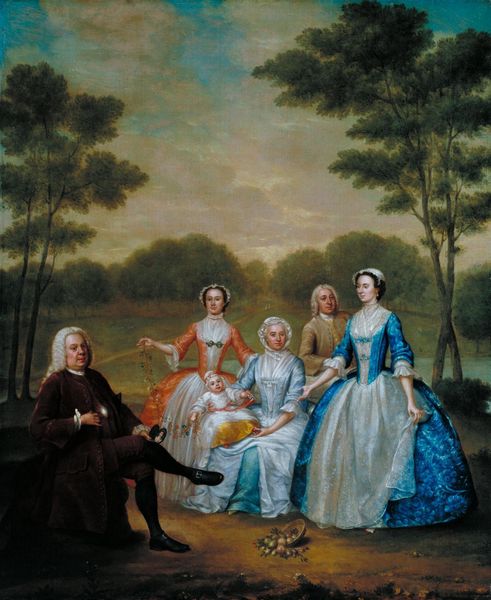
Der fürstlich Esterházy’sche Rat Mathias Kerzmann mit seiner zweiten Gattin Maria Helena, geb. Mikolischütz, und Tochter Maria 1835
0:00
0:00
painting, oil-paint
#
portrait
#
figurative
#
character portrait
#
painting
#
oil-paint
#
oil painting
#
group-portraits
#
romanticism
#
academic-art
Copyright: Public Domain: Artvee
Curator: Welcome. We’re standing before Ferdinand Georg Waldmüller’s 1835 family portrait, “Der fürstlich Esterházy’sche Rat Mathias Kerzmann mit seiner zweiten Gattin Maria Helena, geb. Mikolischütz, und Tochter Maria." Editor: It strikes me immediately as a study in contrasts – the man's dark suit against the shimmering fabric of the women’s dresses, and the rather formal pose against the natural backdrop. It feels...posed, almost deliberately so. Curator: It is, quite deliberately. Consider the garden setting itself—a symbol of cultivated nature, reflecting the family's own cultivated status. The little girl’s pose with her hand in his suggests filial connection, a very deliberate assertion of dynastic stability. Editor: And let’s consider those shimmering dresses! Look at the light reflecting off the fabric, it’s incredibly detailed, you can see the handwork. The textile production itself – where did these materials come from? Who was making these clothes? The drape the wife is holding gives some clues about global commerce, the circulation of precious goods that is really telling to me. Curator: Good eye! The family’s position as part of the Esterházy court demanded such outward displays of wealth and status. Note how Kerzmann’s dark suit almost anchors the composition, framing his wife and daughter as jewels, literally radiant. I think we also read something in his tight, proper expression – of propriety, even social anxiety during a time of rising middle-class aspiration to the aristocracy. Editor: Absolutely, because the suits were not just being bought from any store. But that gesture with the man's hand, how it's slightly caressing the daughter; he could be holding the fabrics she's wearing – emphasizing labor in an unconventional manner. The material itself takes a certain form as the statement of hierarchy. Curator: Waldmüller was very interested in accurately portraying texture and light, pushing him toward realism, despite its placement in the Romanticism movement, so details that reveal economic details are not out of place at all. His visual precision served as a testament to their importance, in addition to their wealth. Editor: This emphasis, it speaks to Romanticism, which did more than prioritize high born folks and their inner subjectivity but became embedded in commodity. Considering that tension now enhances the symbolic significance of the sitters in their surrounding—more interesting than what initially meets the eye. Curator: Agreed. Looking at the painting has allowed us both to consider more closely a cultural record deeply embedded within a historical moment, and yet perhaps unexpectedly material.
Comments
No comments
Be the first to comment and join the conversation on the ultimate creative platform.
